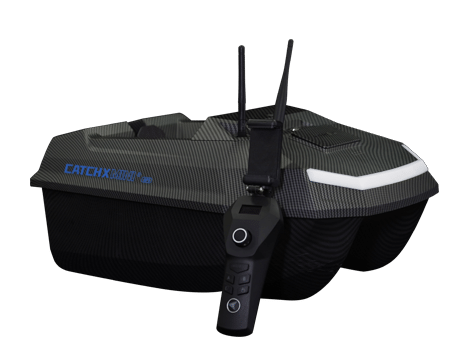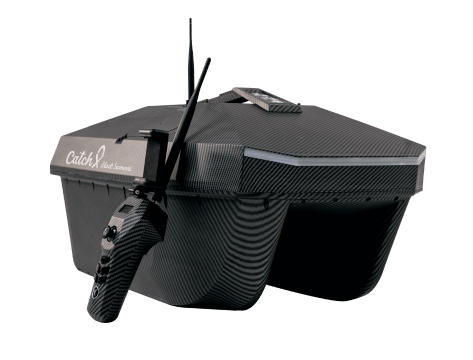Catching Live Bait: All You Need to Know
If you like catching big fish, you know that nothing works as well as using live bait. In fact, having a few wiggling critters at hand is often the difference between a memorable trip and an empty cooler. The trouble is, you can’t always get your hands on live bait. Or perhaps you just don’t want to shell out the money to buy some. To help you out, we made this simple guide to catching live bait on your own.
In this guide, we’ll cover where and how to catch live bait, as well as how to keep it alive for as long as possible. Once you’ve read this guide, you’ll be able to catch your own live bait, as well as maximize your hook-up rate. Let’s dive in!
Where to find live bait?
Obviously, where you’ll catch your bait will depend on which bait fish you’re after. However, there are a few rules of thumb you can follow.
Structure
Bait fish are skittish, and will generally keep to sheltered areas or underwater structure. Jetties, pylons, shallow reefs or wrecks: these are all good places to start your search.
Birds
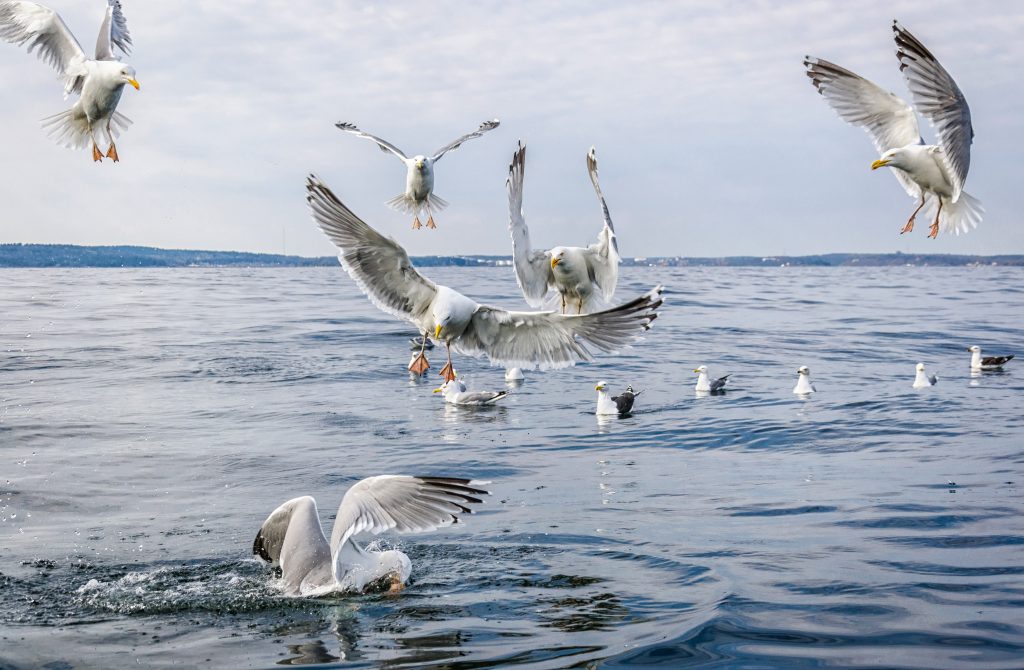
Of course, not all bait fish live in shallow water. If you’re out in the open, one surefire sign that bait is close is the presence of birds. Birds can spot a school of fish from hundreds of yards away. Think of them as your natural fishfinder. If you see commotion on the water surface or birds swooping in, that usually means that your bait is near.
Chumming
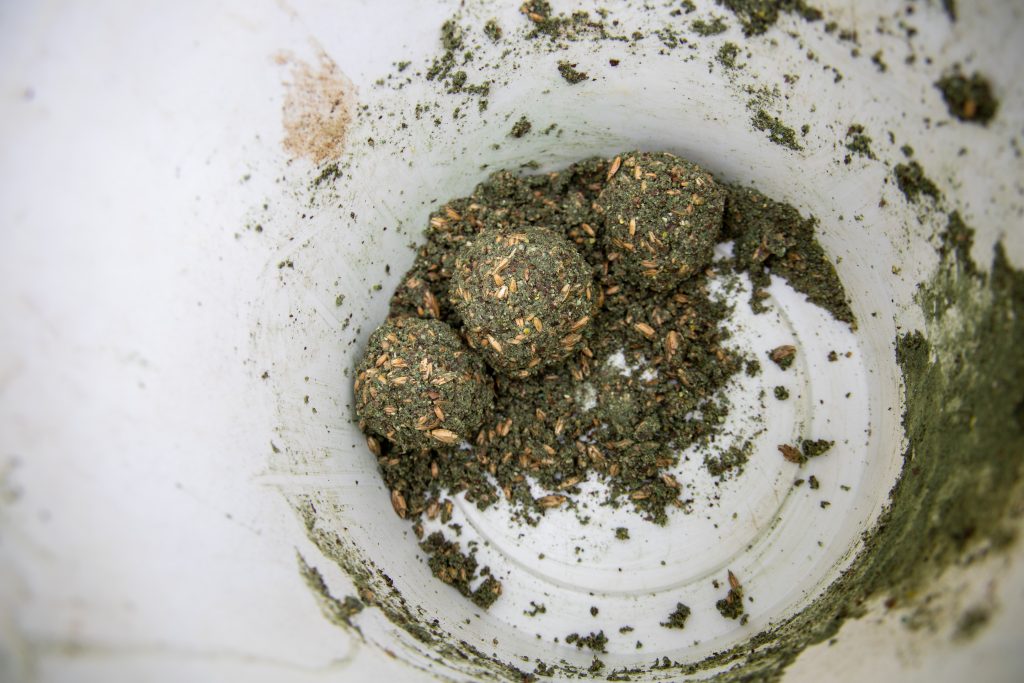
If all else fails, you can always make bait fish come to you. How do you do this? By chumming the water, of course. Chumming is a tried and tested tactic for finding bait fish. All you need to know is how to make an attractive chum mixture. The best mixtures include a “meaty” component like maggots, shrimp, or pinfish, a scent enhancer like fish oil, and a binder like oats, breadcrumbs, or sand.
Word of Mouth
Last but not least, the quickest way to find live bait is by simply asking. Next time you want to catch bait, swing by the local tackle shop and ask for pointers. More often than not, you’ll save yourself a lot of time and effort.
How to Catch Live Bait
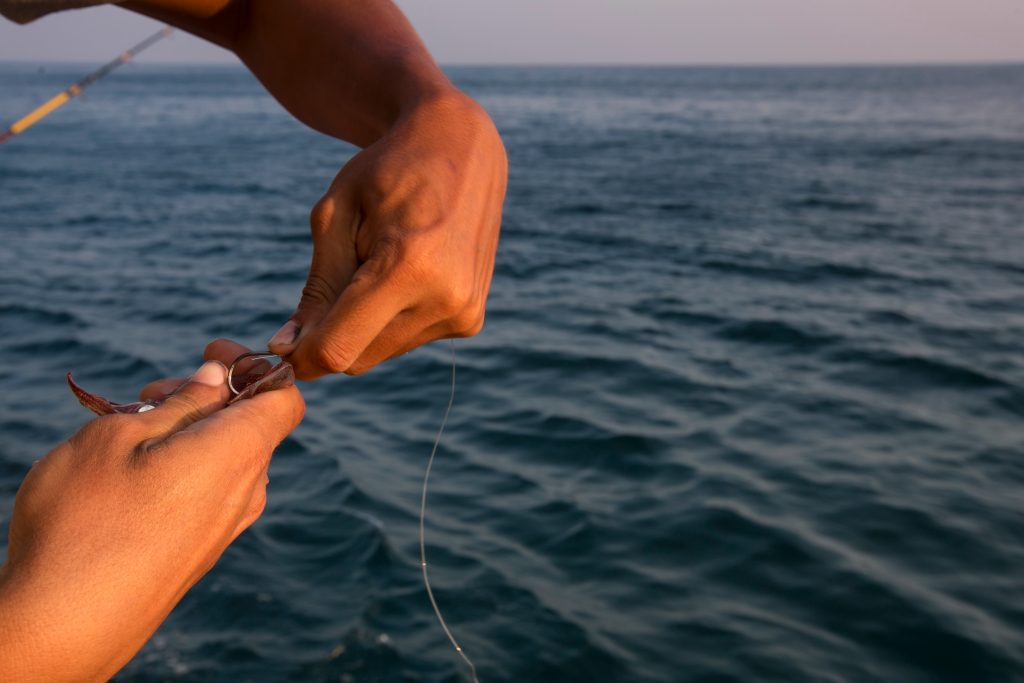
You’ve found your live bait, great. Now all you’ve got to do is catch it. Depending on what you’re after, there are several ways in which you can catch live bait. We’ll explain each one below.
Using a Sabiki Rig
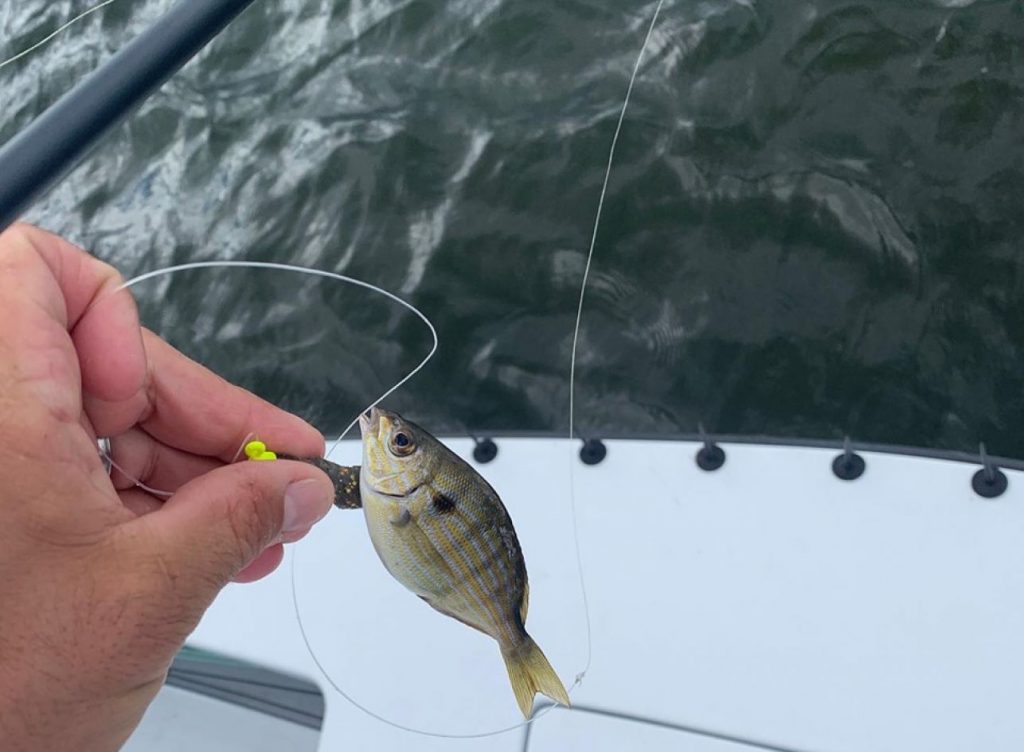
Sabiki rigs are highly effective bait-catching contraptions. For those of you who don’t know, a Sabiki rig is a setup of 6 to 10 small hooks tied to a single line, with a weight on the end. This rig can get you anything from threadfin herring and minnows to pinfish and grunts.
Sabiki rigs come in a variety of different designs, each made for a different type of bait fish. Here are a few basic tips for using a sabiki to catch live bait:
- Bait up. Small slivers of shrimp will do the job. If your Sabiki already came with flies, use those.
- Use a light rod. You’re catching small fish here, so you want to feel every peck and nibble.
- Use a sinker. This will make your line go straight down, and also prevent it from tangling. Depending on the type of line, you’ll need 1 or 2 oz.
- Imitate the fish. Once you’ve deployed your rig, use light jigging motions to imitate natural movement. Experiment with different depths until you find your sweet spot.
- Don’t reel on the first bite. Sabikis have multiple hooks for a reason. Allow a few seconds for them to do their work.
- Have a de-hooker ready. A de-hooker significantly cuts the time you need to handle your bait fish. This not only increases the bait’s chances of survival, but also keeps their protective slime, and lessens your own odor on the fish.
Netting
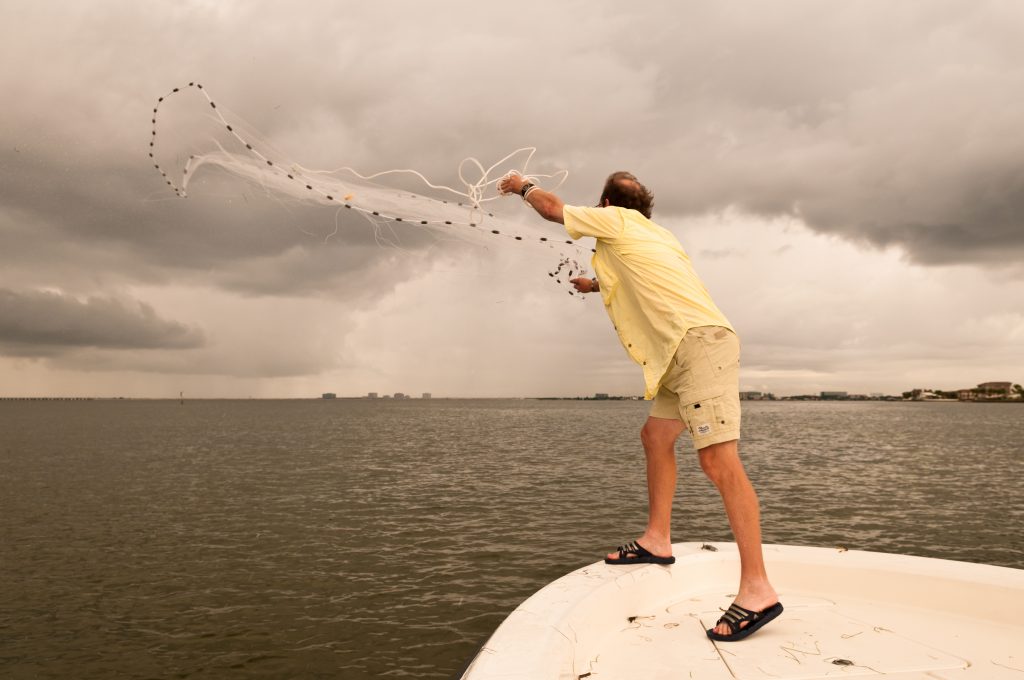
Using cast nets is a very popular live bait catching technique, and for a number of reasons. Number one, you can use them almost anywhere. Number two, you can catch a tremendous amount of bait fish at once. And number three, using a cast net is cheap.
A cast net can be your best friend if you know which one to use. Here are a few tips to get you started.
Size matters. If you’re catching larger bait, you’ll need a larger net, and vice versa. Generally speaking, net sizes range between 3–10 feet in diameter.
Get the right mesh. A denser net will keep smaller fish inside the net, but it will also weigh more, and thus be harder to throw. Mesh sizes range between 3/16 of an inch and 1 inch.
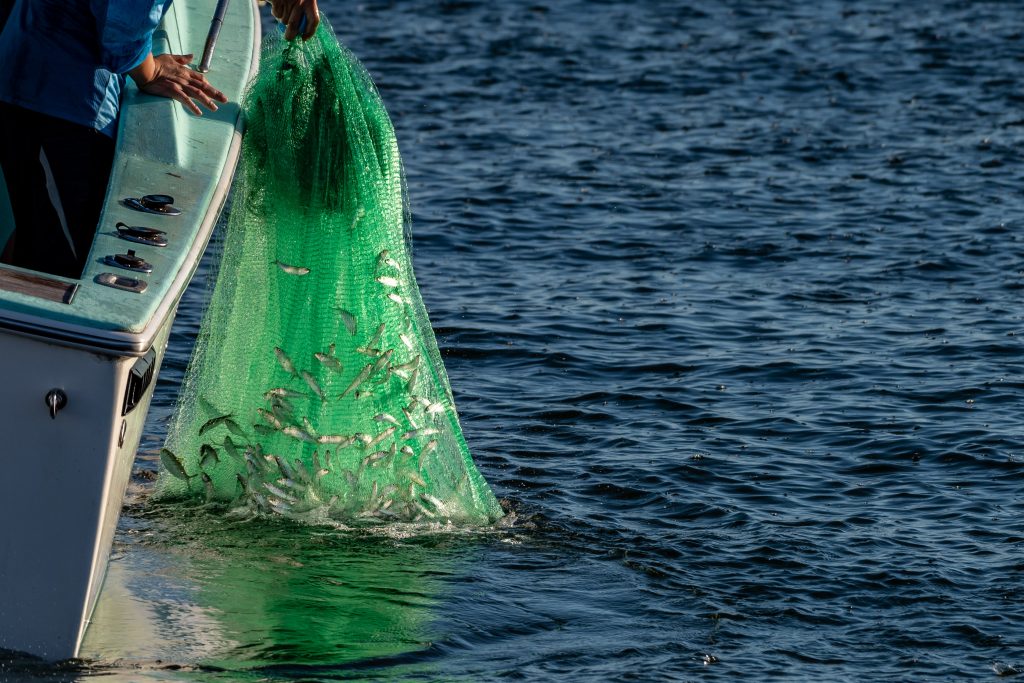
Last but not least, you need to choose the right weights. As a rule of thumb, heavier weights will sink your net faster, and catch more fish. On the other hand, they will be harder to throw properly, so it’s important that you find a good middle ground.
Net size, mesh size, weights, what does this really mean? Well, for baits 2–3 inches long, a 5′ and 1/4″ mesh will do fine in most cases. Nets like this one can get you plenty of smaller bait fish like sardines. For a 9″ mullet, on the other hand, you’ll need something like an 8’1″ mesh net.
This isn’t exact science, of course. You still have to consider things like water depth, currents, your strength, and other factors. Most of all, you need to try, and fail, and then try again. Nothing beats experience, and that rings true for cast netting, same as for any other bait catching tactic.
Trapping
Trapping is perhaps the easiest way to catch bait fish. There are a number of ways you can trap bait fish, but for the sake of simplicity, we’ll stick to this one, easy-to-do method. To set up this bait trap, you’ll need a 1 gallon water bottle, a rope, a knife, some frozen bait, and a stone. Here’s what you need to do:
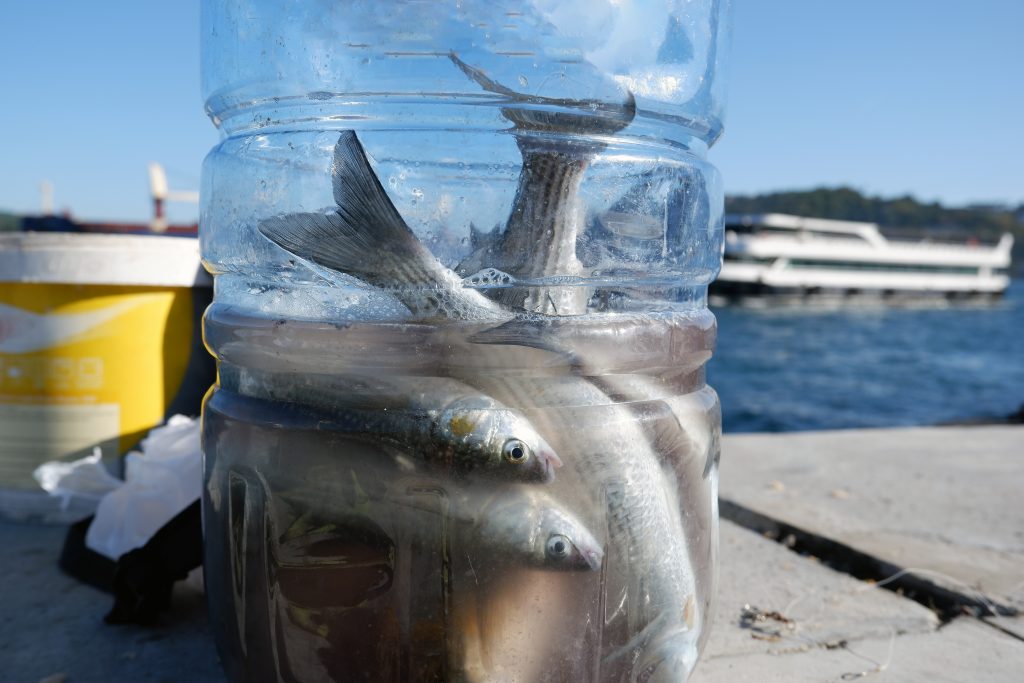
- Using your knife, make two perpendicular cuts (a cross) in the middle of your water bottle. The two cuts should form four triangles, with tips facing the same way.
- Push the triangles down into the bottle, so that they form a funnel.
- Tie your rope through the bottle. Make holes in the bottle if necessary.
- Place your frozen bait and your stone inside the bottle.
- Throw your bottle into the water, and wait.
Depending on your timing and location, you should have a bait fish or two in your bottle within minutes. If you’re trapping in shallow waters, you can prod the bottom to stir the waterbed and attract bait fish before you lay your bottle down.
Keeping Your Bait Alive

You got your live bait on board, good work! But don’t put your victory hat on just yet. All the effort you made will mean little if your bait dies before your first cast. Keeping your bait alive and kicking is crucial if you want to have an attractive offering. Here are a few ways to keep your bait fish swimming.
If you’re fishing on a quality fishing boat, chances are that you’ll have a bait well onboard. If so, lucky you. Regardless of whether you have a bait well or a bucket, there are several things you must do to keep your bait fish swimming.
Get Some Air
Fish need oxygen to survive, and once they use up all of it, they will die. For this reason, you need to keep a steady flow of oxygen coming into your well or bucket. To do this, you need to get yourself an aerator.
An aerator is a small pump that’s used to force air down into the water where the bait fish are swimming. Once the aerator forces the air down, some of the air bubbles out, but the rest dissolves in the water, thus becoming available for fish to “breathe.”
Keep it Cool
Fish tend to liven up when the waters are warmer. You’d think that warming the bait well would be a good idea, but that’s not the case. Bait fish use up more oxygen when the water is warmer, and die faster as a consequence.
To maximize your bait’s survival time, you want to keep your bait water slightly cooler than the temperature of the water you’re fishing in. Putting a frozen water bottle on the bottom of your bait container is an easy and effective way to do this. Alternatively, you can just chuck a few cubes of ice every now and then. Don’t overdo it, however. Shocking your bait with a drastic temperature change is bound to kill them.
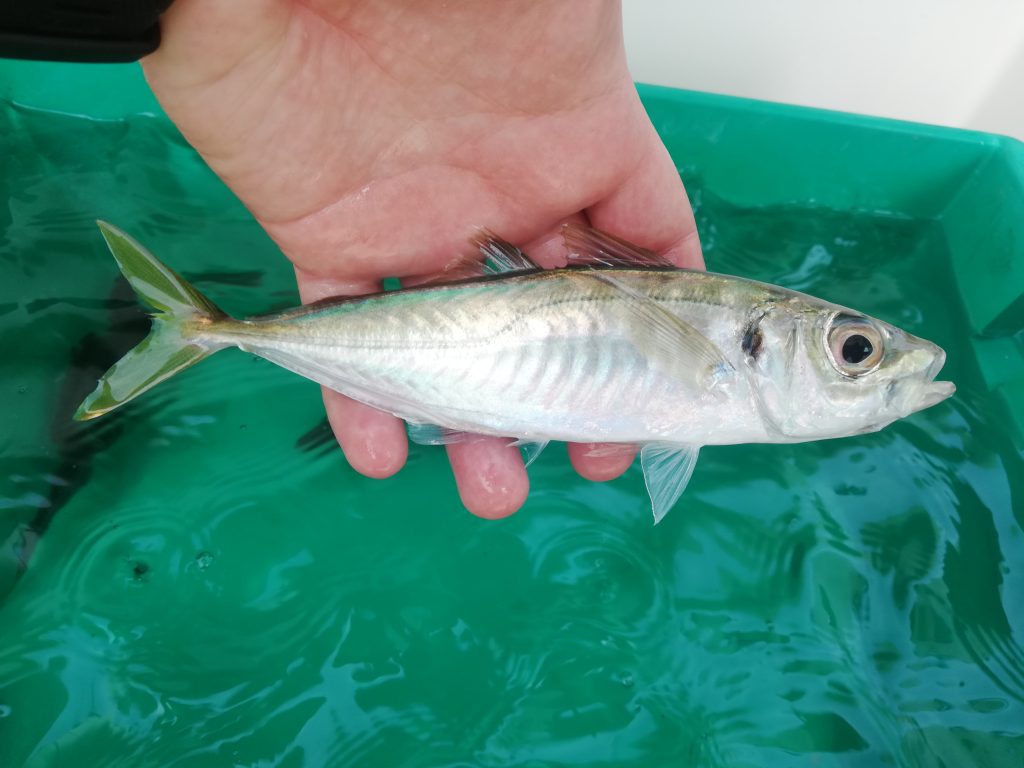
Keep it Flowing
If you’re planning a longer outing, you might want to change your bait water once or twice during your trip. This will make sure that any toxins that build up in the tank are thrown away for clean water. Same as with the temperature, you don’t want to change things too much. Instead, change around half of the water you have on each go-around.
Catch ‘Em All
Fishing with live bait is by far the most effective way to catch fish. Just ask 90% of the IGFA All-Tackle record holders. Using the tricks we showed you today, you’ll not only have loads of fun, you’ll have a full cooler to brag about, too.
So there you have it. Now that you know the ins and outs of catching live bait, nothing stands in the way of your angling adventure.
This essay is from: http://dwz.date/euqP



























